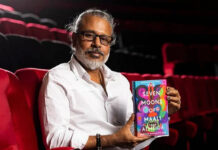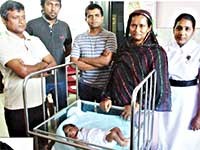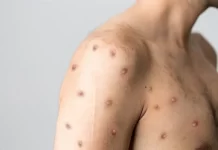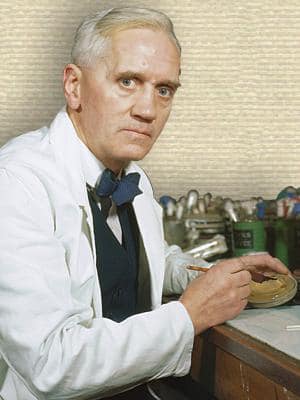ක්ෂුද්ර ජීව විද්යාත්මක ආසාදන 1920 දශකයට පෙර මිනිසුන් මරණයට පත්වීමට බලපෑ ප්රධාන සාධකයකි. ඇසටවත් නොපෙනෙන ක්ෂුද්ර ජීවීන්ට එරෙහිව දහස් ගණන් මිනිසුන් සටන් කර ජීවිතය හැර ගියහ. නමුත් 1920 ගණන්වල අහඹු සොයාගැනීමක් නිසා මිනිසා බැක්ටීරියා වලට එරෙහිව සටන් කිරීමට හොඳ ආයුධයක් බවට පත් විය. ඒ ප්රබල ආයුධය ප්රතිජීවක හෙවත් ප්රතිජීවක වේ.
වැරදි විමර්ශනයක්
ඇලෙක්සැන්ඩර් ෆ්ලෙමින් මහතා 1920 ගණන්වල මහා බ්රිතාන්යයේ හිටපු ක්ෂුද්ර ජීව විද්යාඥයෙකි. ලන්ඩනයේ ශාන්ත මරියා රෝහලේ සේවය කළ ඔහු, මිනිසාගේ ශරීරයේ පිටතින් නිරාවරණය වී ඇති ඇස්, කන්, නාසය වැනි අවයවවල බැක්ටීරියා වලට එරෙහි ආරක්ෂක උපක්රම පිළිබඳව විමර්ශනය කළේය. ඒ දවස්වල බැක්ටීරියා ආසාදනවලට එරෙහිව මිනිසා සතුව තිබූ බලවත්ම ආයුධය විෂබීජ නාශකය. ඇලෙක්සැන්ඩර් ෆ්ලෙමින් මහත්මියගේ පරීක්ෂණවල ප්රතිඵලයක් ලෙස මිනිසාගේ ඇස්වල සහ කන්වල විෂබීජ නාශක හැකියාවක් පෙන්නුම් කරන රසායනික ද්රව්ය හඳුනා ගැනීමට ඔහුට හැකි විය. නමුත් එම රසායන ද්රව්යවලට ඉතා දරුණු විෂබීජ වර්ගයක් විනාශ කිරීමේ හැකියාවක් තිබුණේ නැහැ.
1928 වර්ෂයේ දිනක මම මහාචාර්ය ෆ්ලෙමිං දුටුවා දේශී රසායනාගාරයේ වගා කළ බැක්ටීරියා නියැදියක මල් කිහිපයක් වැවී ඇති බව. ඔහුගේ පරීක්ෂණය අසාර්ථක බව මහාචාර්යවරයාට හැඟුණි. ඔහු බැක්ටීරියාව රෝපණය කරන ලද රසායනාගාර ඉවතට විසි කිරීමට මුලින්ම එය හොඳින් නිරීක්ෂණය කළේය. එවිට දේශී බළලා වැඩී ඇති ස්ථානය අවට බැක්ටීරියා වර්ධනය වී නොමැති බව මහාචාර්යවරයාට පෙනී ගියේය. එකපාරටම මහාචාර්යතුමාට මතක් වුණේ මිනිස් සිරුරේ ආරක්ෂිත රසායන වගේ දෙයක් තියෙන්න පුළුවන් කියලා. තවදුරටත් විමර්ශනය කළ මහාචාර්ය ෆ්ලෙමිංට හැකි වූයේ සැරවවලින් සාදන ලද රසායනයකට දරුණු විෂබීජ නාශක පවා විනාශ කළ හැකි බව සොයා ගැනීමටය. පසුව පරීක්ෂණ කළ මහාචාර්යවරයා මස් හොද්ද නම් රෝපණ මාධ්යයක මෙවැනි පුස් ගෙඩියක් වැවීමට සමත් විය. රෝපණ මාධ්ය එහෙම කහ වුණා. මහාචාර්ය ෆ්ලෙමින් මෙම රසායනය පෙනිසිලින් ලෙස නම් කර ඇත. නමුත් මහාචාර්ය ෆ්ලෙමිංට මිනිසුන්ට සලකන ආකාරයෙන් පෙනිසිලින් ශුද්ධ කිරීමට නොහැකි විය.
අලුත් බෙහෙතක්
1930 ගණන් වන විට, මහාචාර්ය හාවර්ඩ් ෆ්ලෝරි සහ මහාචාර්ය ඊ.ඩී. බ්රිතාන්යයේ ඔක්ස්ෆර්ඩ් විශ්ව විද්යාලයේ දාමය මිනිසුන්ට ඖෂධයක් ලෙස ප්රතිකාර කිරීම සඳහා වැඩිදියුණු කිරීමේ පර්යේෂණ සමඟ එක් විය. මහාචාර්ය චේන් පෙනිසිලින් පිරිසිදු කිරීමේ ක්රියාවලිය විමර්ශනය කළ අතර මහාචාර්ය ෆ්ලෝරි ඇතුළු කණ්ඩායම මිනිසුන්ට පෙනිසිලින් ලබා දිය හැකි ආකාරය විමර්ශනය කළහ.
මහාචාර්ය චේන් සහ කණ්ඩායම කළ පළමු දෙය නම් ක්රියාකාරී පෙනිසිලින් ජලයට නිස්සාරණය කිරීමයි. ඉන්පසු වතුර ඉවත් කර පෙනිසිලින් නිස්සාරණය කළා. මේ විදියට නිස්සාරණය කරපු පෙනිසිලින් ටික කහ පාටයි. නමුත් මෙම පෙනිසිලියානුවන් මිනිසුන්ට දීමට තරම් පූජනීය නොවේ. ඉන්පසු කිහිප වතාවක් පුරවන ලද ඇලුමිනියම් පයිප්පයක් හරහා මෙම ලා කහ කුඩ යවා මිනිසුන්ට අති පූජනීය පෙනිසිලියම් නිෂ්පාදකයින් ලබා දීමට මහාචාර්ය චේන් සමත් විය.
ඖෂධය පරීක්ෂාවට ලක් කෙරේ
මහාචාර්ය ෆ්ලෝරි සහ කණ්ඩායම මිනිසුන්ට මිනිසුන්ට ලබා දිය හැකි අති පූජනීය පෙනිසිලින් ලබා දීමට පෙර සතුන් පරීක්ෂා කිරීමට තීරණය කළහ. මෙම පරීක්ෂණය රසායනාගාරයේ මීයන් යොදාගෙන සිදු කර ඇත. මුලින්ම රසායනාගාර මීයන්ට Steptococus නම් බැක්ටීරියාව එන්නත් කළා. ඊට පස්සෙ ලෙඩ්ඩු මීයො බාගෙට පෙනිසිලින් දුන්නා. පෙනිසිලින් දුන් මීයන් ජීවත් වූ අතර අනෙක් මීයන් මිය ගියේය. පෙනිසිලින් වල බැක්ටීරියා ඝාතක හැකියාව රසායනාගාරයේදී ඔප්පු කිරීමට මහාචාර්යවරයා සමත් විය. ඉන්පසුව පෙනිසිලියානුවන් යොදාගෙන පරීක්ෂා කිරීමට සැලසුම් කළ මහාචාර්යවරයාට එම පරීක්ෂණය සාර්ථකව නිම කිරීමට හැකි විය.
රණවිරුවන්ට අලුත් බලාපොරොත්තුවක්
දෙවන ලෝක සංග්රාමය 1941 වන විට දැඩි ලෙස ඇවිලෙමින් පැවති අතර යුද්ධයේදී තුවාල ලැබූ සොල්දාදුවන් දහස් ගණනක් බැක්ටීරියා රුධිර විෂ වීම (සෙප්සිස්) හේතුවෙන් මිය ගියහ. මෙම තත්වයට හොඳම විසඳුම වන්නේ රුධිරයේ ඇති බැක්ටීරියා විනාශ කිරීමයි. මෙම කාර්යය සඳහා හොඳම ආයුධය පෙනිසිලින් ය. නමුත් තවමත් විශාල පෙනිසිලින් එකක් සෑදීමට ක්රමයක් නොතිබුණි. ඇමරිකා එක්සත් ජනපදයේ ඖෂධ නිෂ්පාදන සමාගම් සමඟ විමර්ශනය කළ මහාචාර්ය ෆ්ලෝරි, පෙනිසිලින් ස්කන්ධය සෑදීමේ ක්රමයක් සොයා ගැනීමට සමත් විය. යුද්ධයෙන් තුවාල ලැබූ සොල්දාදුවන්ගේ දස දහස් ගණනකගේ ජීවිත බේරා ගැනීමට අපට හැකි වූයේ එබැවිනි.
ලෝකයට පෙනිසිලින්
මහාචාර්ය ඇලෙක්සැන්ඩර් ෆ්ලෙමින්ගේ භාරයේ ප්රතිකාර ලබමින් සිටි මෙනින්ජයිටිස් (මොළයේ උණ) රෝගියෙකු මරණයට ආසන්නව සිටින විට මෙම රෝගියාට ප්රතිකාර කිරීම සඳහා පෙනිසිලියම් ලබා දෙන ලෙස මහාචාර්ය ෆ්ලෙමිං මහාචාර්ය ෆ්ලොරිගෙන් ඉල්ලා සිටියේය. වහාම ප්රතිචාර දැක්වූ මහාචාර්යවරයා අවශ්ය පෙනිසිලින් සහ ඒවා ලබා දෙන ආකාරය මහාචාර්ය ෆ්ලෙමිංට කීවේය. මෙය රෝගියාගේ ජීවිතය බේරා ගත්තා පමණක් නොව, ඇලෙක්සැන්ඩර් ෆ්ලෙමින් මහාචාර්යවරයා පෙනිසිලින් හි ජීවිත බේරා ගැනීමට ඇති හැකියාව පිළිබඳව බ්රිතාන්ය රජයට ඒත්තු ගැන්වීය. ඒත් එක්කම බි්රතාන්ය රජය පෙනිසිලින් වානිජ මට්ටමින් නිෂ්පාදනය කරලා ලෝකෙට බෙදන්න පටන් ගත්තේ යුද්ධය අවසන් වුණාට පස්සේ.
මාර්ග බාධකයක්
වරක් පෙනිසිලින් භාවිතා කරන විට විද්යාඥයන් තේරුම් ගත්තේ පෙනිසිලින් වලට මාරාන්තික බැක්ටීරියා විනාශ කිරීමට හැකියාවක් නොමැති බවයි. මෙය පෙනිසිලින් ප්රතිරෝධය හෝ පෙනිසිලින් ප්රතිරෝධය ලෙස හැදින්විය. නමුත් 1959 දී ඇමරිකානු ඖෂධ නිෂ්පාදන සමාගම් සමඟ එකතු වූ මහාචාර්ය චේන් එයට විසඳුමක් සොයා ගැනීමට සමත් විය. ඔහු කළේ පෙනිසිලින් අච්චුව ගෙන එයින් කොටසක් ඉවත් කර ඒ වෙනුවට තවත් කොටසක් එකතු කර නව ප්රතිජීවකයක් නිර්මාණය කිරීමයි. එය Cephalosporin ලෙස හැඳින්වේ. මේ ආකාරයට අදටත් රසායනාගාර තුළ නව ප්රතිජීවක වර්ග සොයා ගැනීම සඳහා පරීක්ෂණ සිදු කෙරේ. ප්රතිජීවක ඖෂධවලට ඇති ප්රතිරෝධය දිනෙන් දින ඉහළ යාම ඊට ප්රධාන හේතුවයි.
ඇගයීමක්
පෙනිසිලින් සොයා ගෙන මිනිසාට එය භාවිතා කළ හැකි ආකාරය වැඩිදියුණු කළ කීර්තිමත් විද්යාඥයින් වෙනුවෙන් 1945 දී වෛද්ය විද්යාව සඳහා නොබෙල් ත්යාගයෙන් පිදුම් ලැබූ මහාචාර්ය හාවර්ඩ් ෆ්ලෝරි, මහාචාර්ය ඊ.ඩී.චේන්, මහාචාර්ය ඇලෙක්සැන්ඩර් ප්ලෙමිං.
How antibiotics were found without antibiotics
Microbiological infections were one of the major factors that affected people to reach death before the 1920 s. Thousands of people fought against microorganisms which are not even visible to the eye and left their lives. But a random discovery in the 1920 s made the man a good weapon to fight bacteria. That powerful weapon is antibiotics or antibiotics.
A wrong investigation
Mr. Alexander Fleming was a former microbiologist in Great Britain in the 1920 s. He, who worked at St Mary’s Hospital, London, was investigating the protective tactics against bacteria in the organs that have been exposed to the outside of the man’s body, such as eyes, ears, nose. Disinfectant was the most powerful weapon man had against bacterial infections in those days. As a result of Mrs. Alexander Fleming’s tests, he was able to detect chemicals that show a disinfectant ability in human’s eyes and ears. But those chemicals didn’t have the ability to kill a very severe type of germ.
One day in the year 1928, I saw Professor Fleming that a sample of bacteria that was grown in the laboratory Desi has grown a few flowers. The professor felt that his test was a failure. He monitored it well first to throw away the labs that planted bacteria. Then the professor noticed that the bacteria around the place where the desi cat has grown hasn’t grown. Suddenly the professor remembered that there could be something like the protective chemicals in the human body. Further investigating Prof. Fleming was able to find that a chemical made from puss could destroy even severely disinfectant. The professor, who was later investigating, was able to grow this kind of puss in a planting media called Meat broth. The planting media turned yellow like that. Professor Fleming named this chemical penicillin. But Professor Fleming couldn’t sanctify the penicillin in a way he could treat people.
A new medicine
By the 1930 s, Professor Harward Florey and Professor E.D. Chain at Oxford University, Britain teamed up with improvement experiments to treat humans as a medicine. Professor Chain investigated the penicillin purification process and the team, including Professor Florey, investigated how they could provide penicillin to people.
The first thing Professor Chain and the team did was extract active penicillin into water. Then removed the water and extracted the penicillin. The penicillin that was extracted like this was a little yellow. But these Penicillians aren’t sacred enough to give people. And then Prof. Chain was able to send these light yellow umbrellas through an aluminum pipe filled several times and give people the most sacred penicillium makers.
The drug is being tested
Professor Florey and the team decided to test animals before giving people the most sacred penicillin they could give to humans this way. This test was done using rats in the lab. First the lab rats were injected with a bacteria called Steptococus. And then gave penicillin to half the sick rats. The rats that gave the penicillin lived and the other rats died. The professor was able to prove the bacterial killer ability of Penicillin in the lab. And then the professor who planned to test using penicillian people was able to successfully finish the test.
New hope for the soldiers
World War II was burning hard by 1941 Thousands of soldiers wounded in war died due to bacterial blood poisoning (Sepsis). The best solution to this situation is to destroy the bacteria in the blood. Penicillin is the best weapon for this job. But still didn’t have a way to make a large penicillin. Professor Florey, who investigated with pharmaceutical manufacturing companies in the United States of America, was able to find a way to make penicillin mass. This was why we could save tens of thousands of lives of soldiers wounded in the war.
Penicilline to the world
Professor Fleming requested Professor Florey to provide penicillium for treatment for this patient when a meningitis (brain fever) patient is nearing death who was undergoing treatment at Prof. Alexander Fleming’s custody. The professor who immediately responded told Prof. Fleming the required penicillin and how to deliver them. This not only saved the patient’s life, but Alexander Fleming professor convinced the British government about the potential to save lives in Penicillin. At the same time the British government started producing Penicillin at the commercial level and distributing it to the world after the war was over.
A road block
Once upon a time using penicillin, scientists realized that penicillin is not capable of destroying some deadly bacteria. This was called penicillin resistance or penicillin resistance. But Professor Chain, who teamed up with American pharmaceutical manufacturing companies in 1959, was able to find a solution. What he did was take the penicillin mold and remove part of it and instead add another part and create a new antibiotics. It’s called Cephalosporin. In this way, even today, testing is being done to find new types of antibiotics in labs. The main reason for this is that the resistance to antibiotics is increasing day by day.
An evaluation
Prof. Harward Florey, Prof. E.D.Chain, Professor Alexander Pleming, who was awarded the Nobel Prize for Medicine in 1945 for the renowned scientists who discovered penicillin and enhanced the way that man can use it.
Source : FB Post





















